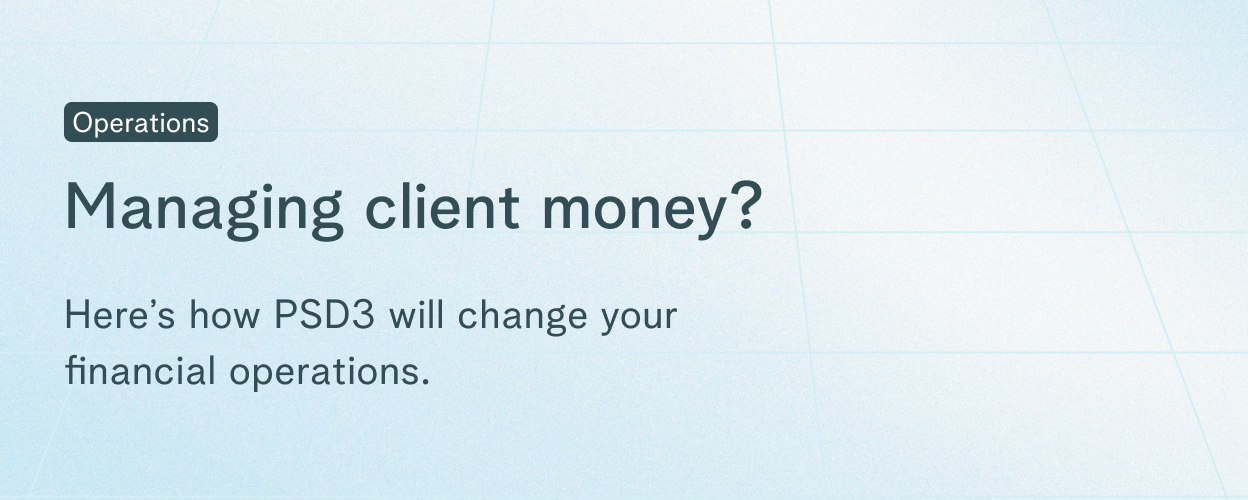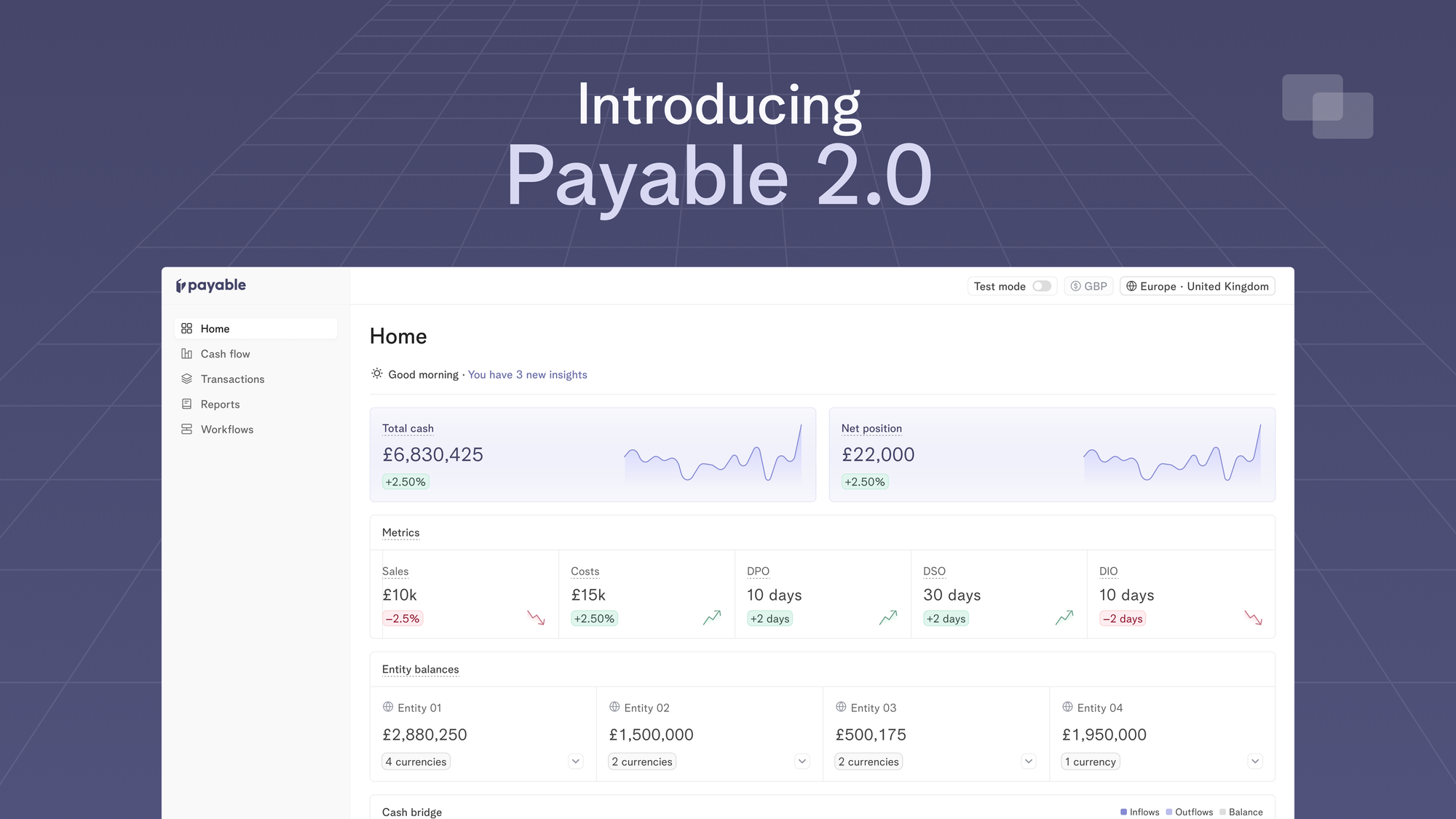
The payment industry is changing quickly in light of PSD3 (Payment Services Directive 3). And while a definite timeline for PSD3 is yet to be announced, one thigh is clear - it will shake things up once again. A key change is that payment institutions (PI) and electronic money issuers (EMI) will need to have multiple segregated accounts to better protect customer funds. While this move will improve security, it will also add significant operational complexity for these institutions. So if you are a PI or an EMI managing customer funds, read on to learn more what PSD3 means for you and what operational challenges it brings along.
How have payment services directive evolved?
The Payment Services Directive (PSD) was created by the European Union (EU) in 2007 to standardise payment services across EU countries. It aimed to remove obstacles to electronic payments between European countries by establishing a common set of rules. Before PSD, each EU member state had its own payment service rules, causing fragmented markets and limited cross-border payment options.
PSD changed that, promoting a unified market and enabling innovations and opening up the doors for new payment providers. The regulation had a significant impact on consumer rights, requiring payment service providers (PSPs) to level up their standards in user-friendliness, data security, and banning extra charges for card payments. We also saw the rise of new use cases such as contactless payments, e-commerce, and mobile payments. It was the rising tide that lifted all the boats.
PSD2, introduced in January 2018, implemented measures like Strong Customer Authentication (SCA) for online payments to reduce fraud. It also allowed new players, such as payment initiation service providers (PISPs) and account information service providers (AISPs), to operate with customer consent. Third-party providers (TPPs) can access customer data with strict licensing, promoting the development of innovative financial products and services. In the UK, we call this Open Banking.
What are current safeguarding requirements?
According to current EU rules, PI/EMIs must protect all funds kept for more than one business day in specific separate accounts. These accounts are held by different banks to make sure that customer funds are safe from possible institutional problems and unauthorised transfers. This separation guarantees that customer money is distinct from the institution's own funds, giving an extra level of protection.
While safety and security has always been important for safeguarding, it does create a set of operational challenges. Funds received must be segregated on a daily basis, and each payout (such as bank payments or card settlements) must be tracked and accounted for.
What is changing under PSD3?
With the implementation of PSD3, PI/EMIs are now required to open at least a second segregated account with a different bank. This additional measure aims to mitigate risks even further. If the bank fails, funds held in the second segregated account will be covered by the Deposit Guarantee Scheme of the respective country.
If you are a bigger PI/EMIs you might find it relatively easy to meet this requirement if your customer funds remain steady. However smaller institutions, particularly payment service providers, will find it more challenging. Given that most received funds are sent back to beneficiaries daily, account balances are less stable. So, instead of managing funds between the segregated and settlement accounts on a daily basis, you will have to divide and reconcile two segregated accounts ensuring both are evenly balanced.
What impact will PSD3 have on finance operations?
Introducing the additional safeguarding account means adding another bank account under your management. And given that you are already managing multiple bank accounts and banking relationships, this means another bank portal to login, track, reconcile and report on. Tracking money movement and reporting could become an operational nightmare, as you will have to ensure you have compliant processes and risk measures in place.
Regulators are yet to establish and define how funds should be split between the segregated accounts. One option would be to mitigate risk and evenly distribute funds between the accounts or segmenting based on customer profiles and their risk profile. Either way, it has implications on internal processes and systems that run your day-to-day financial operations. And as a rule of thumb - more complexity means more errors.
How can you prepare for funds protection under PSD3?
For starters, evaluate your operational systems and infrastructure. It isn't just a regulatory requirement, it's also a chance to get ready for changes ahead. Ensure you have a direct connection to your bank accounts and back office systems (such as ERP and accounting tools) so you can automate and streamline your operations as you scale. Secondly, be clear what your core operational requirements are and if you have the right policies in place. Then you can look for solutions that can help manage the operational complexity while staying compliant under PSD3.
Stay compliant while scaling your financial operations
Adding multiple segregated accounts under PSD3 is a big step forward in protecting funds. But, it does come with its own challenges, especially for smaller institutions or those moving money daily. Finding the right balance between following the rules, being efficient, and keeping customers happy will need careful planning, using advanced tech, and a deep understanding of the rules we need to follow.
Payable helps PI/EMIs to manage their corporate cash and customer funds while staying compliant. We aggregate all your bank accounts into a single dashboard so you have full visibility of our own funds and safeguarded accounts in real time. Our dashboard helps your team track, reconcile and automate payments in the most effective way. Get in touch today to discuss how we can help scale your financial operations.
Financial Automation
07 Aug 2024
Prior to launching Payable, I built platform and marketplace payments at Checkout.com. Picture this a seller in one country, a buyer in another, and a marketplace connecting them—taking a cut. This experience opened my eyes to fintech infrastructure. The Fintech Trifecta: Cheaper, Faster, Simpler Fintech revolves around moving money efficiently. Venture capital investment theses in fintech universally revolve around three core principles: cheaper, faster, and simpler solutions. Whether it's c

Announcements
Introducing Payable 2.0 - one platform to optimise working capital, make fast liquidity decisions and move your cash metrics in real-time
13 Apr 2024
Today, we’re excited to launch Payable 2.0 which is our evolution to a more connected, intelligent and automated platform for finance teams to track their cash flows in real-time.
